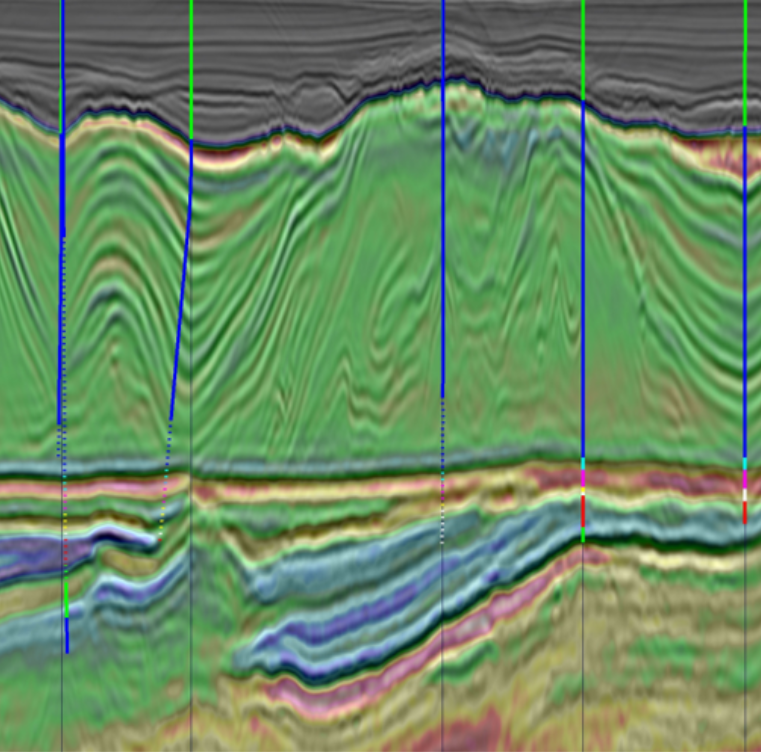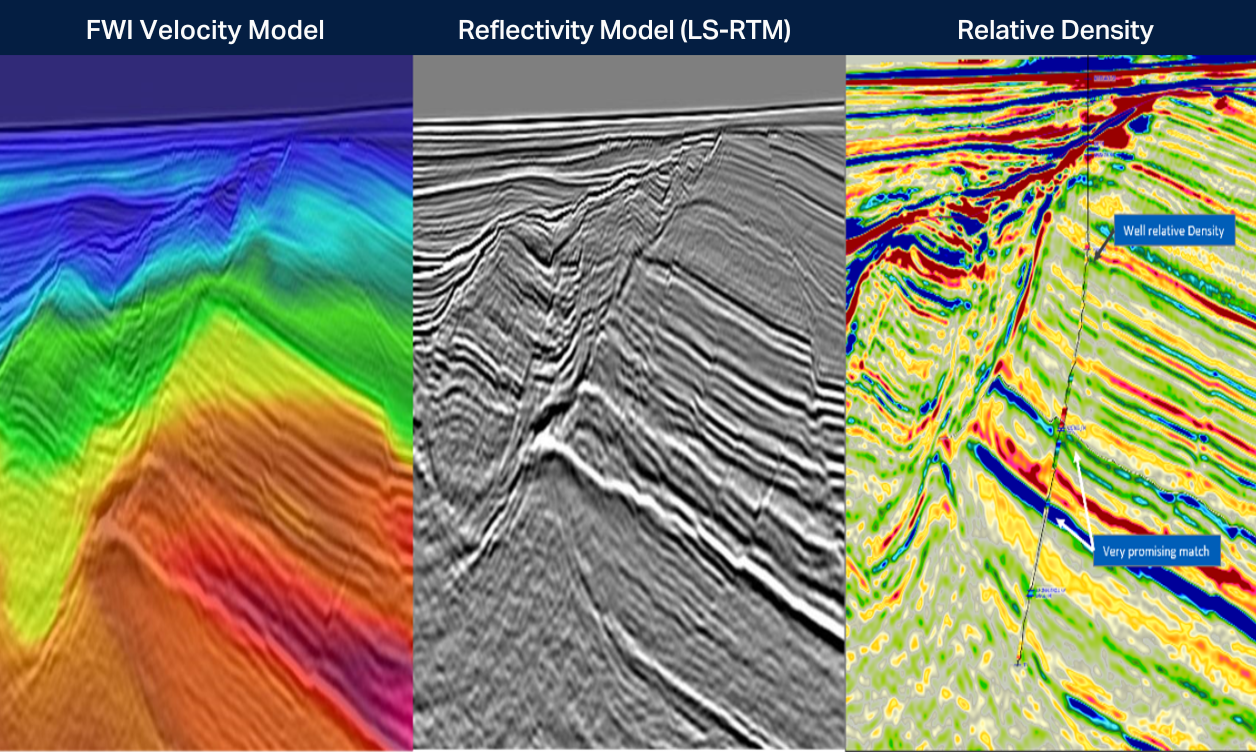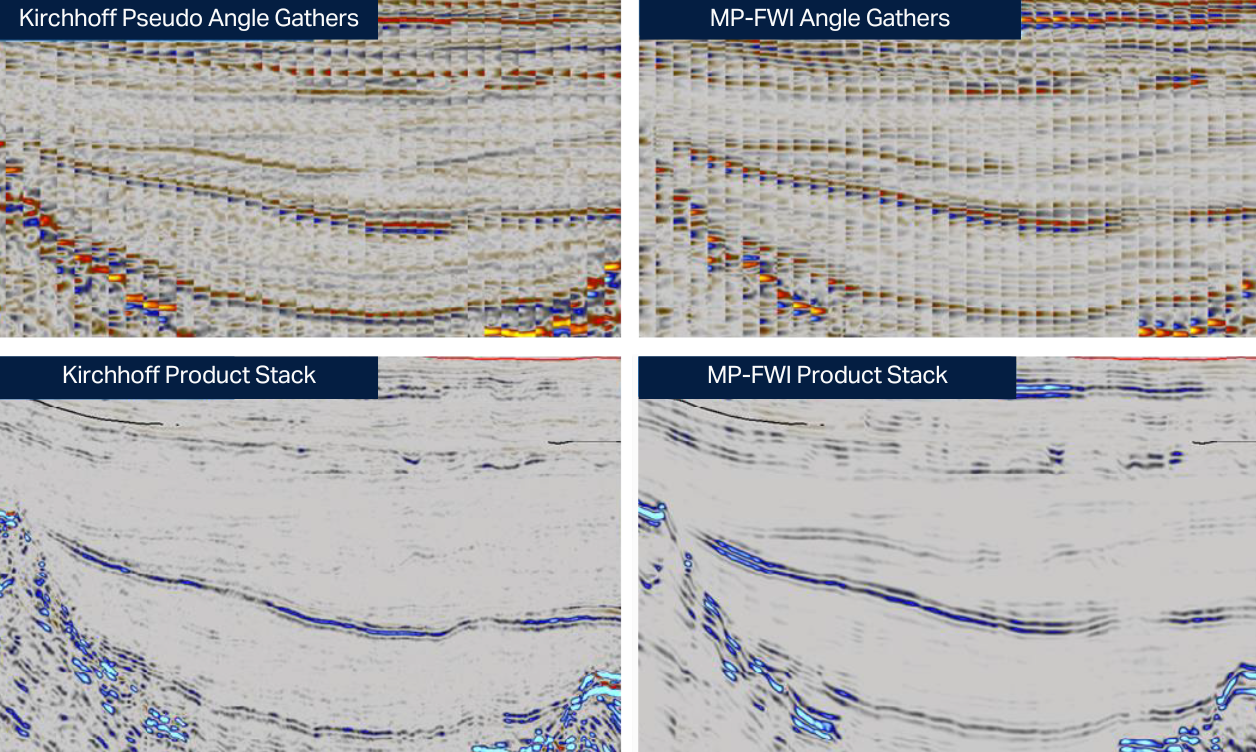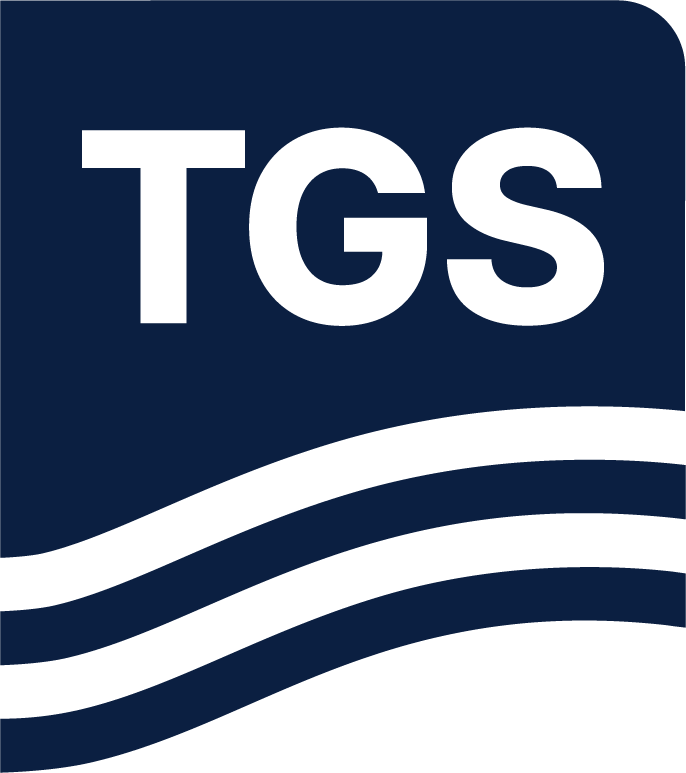Multi-Parameter FWI (MP-FWI)
Our simultaneous data-driven inversion delivers superior velocity model and angle-dependent reflectivity directly from raw seismic data, for faster, more accurate and comprehensive earth models.




Accurate Earth Properties
TGS offers simultaneous Full Waveform Inversion (FWI) velocity model estimation and reflectivity model updates through an extended implementation of the FWI framework. This is the equivalent of performing FWI and Least-Squares Reverse Time Migration (LS-RTM) in a single workflow. It delivers an accurate velocity model and reliable earth properties from field data, in an accelerated timeframe.
- A single data-driven inversion process to simultaneously estimate the FWI velocity model and perform least-squares migration (LS-RTM).
- Inverted FWI velocity model ensures accurate structural imaging and the LS-RTM corrects for propagation effects during the acquisition and migration process.
- Further QI products can be derived from the estimated models, like relative impedance and density.
- It can be extended to the pre-stack domain to deliver angle-dependent reflectivity gathers (LS-RTM) together with the velocity model, enabling further elastic rock property estimations like Vp/Vs and more.
- The methodology works for both node and streamer acquisitions and has been successfully applied in various geological settings.
Simultaneous Inversion of Velocity and Reflectivity
With a single modelling engine, parameterized in terms of velocity and vector reflectivity, the two earth properties are iteratively updated using their appropriate sensitivity kernels based on inverse scattering theory. The vector reflectivity is estimated as a data domain least-squares migration and is the key for updating the velocity model beyond the maximum penetration depth of refracted and diving wave energy.



MP-FWI for Reservoir-Focused Imaging
Conventional imaging suffers from sub-optimal focusing and shadow effects close to geologically complex areas (regional faults), as observed in this Norwegian Sea data example. The multi-parameter inversion refines the velocity model, improving the focusing, and heals the fault shadow zone through the least-squares migration process. Additional QI products like relative impedance and density can be directly derived from the two de-coupled and simultaneously inverted models.
MP-FWI for AVA / AVO Properties
Rock property estimations rely on accurate seismic amplitudes, AVA / AVO response and velocities. The Multi-Parameter FWI inversion process has been extended to the pre-stack domain to accommodate these requirements. Angle dependent reflectivity gathers can be leveraged for precise elastic rock property estimations, valuable in QI workflows.

Speak to a Specialist
Interested in a product demo or trial? Let us know your needs and we’ll connect you to the right person or team.
Book a Data Viewing
Want to see the latest seismic data solutions and imaging technologies in your region of interest or for the next license round? Book a data viewing with one of our experts.
Discuss Your Seismic Data Needs
Every need is different and we'd like the opportunity to discuss yours further. Speak to one of our data or geoscience experts to customize seismic solutions specific to your requirements.

